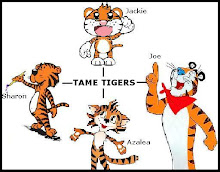If you have trouble in figuring out how to integrate proper technology into your teaching to construct a perfet lesson plan, go to library and borrow this book:
Integrating Educational Technology into Teaching, by M.D.Roblyer.
Different versions are available. I've read the 5th version from PolyU library and now the 3rd version from HKU library. Prefer the latter version, much lighter than the former version.
Here I'd like to share with dear you some useful tips quoted from the book. Hope it helps you think further about your technology integration when design your lesson plan. Here we go.
Preface
Good teaching comes first.
Technology is us.
We control how technology is used in education.
Integration methods should be based in both learning theory and teaching practice.
Integration should match specific teaching and learning needs.
Old integration strategies are not necessary bad; new strategies are not necessarily good.
Brief contents
Part one: introduction and backfround on integrating technology in education
C1: educational technology in context: the big picture
C2: planning and implementation for effective technology integration
C3: learning theories and integration models
Part two: integrating software and media tutors and tools
C4: integrating instructional software into teaching and learning
C5: integrating word processing, spreadsheets, and database software tools into teaching and learning
C6: integrating other software tools into teaching and learning
C7: integrating multimedia and hypermedia into teaching and learning
Part three: linking to learn: principles and strategies
C8: integrating the internet and other distance resources into the curriculum
C9: a link to the future-emerging developments in technology integration
Part four: integrating technology across the curriculum
C10: technology in language arts and foreign language instruction
C11: technology in mathematics and science instruction
C12: technology in social studies instruction
C13: technology in art and music instruction
C14: technology in physical education and health education
C15: technology in special education
Tips
1. There are two instructional methods: directed and constructivist. (p52)
Philosophical differences can be summarized in the following way (p53):
Objectivists. Knowledge has a sepatate, real existence of its own outside the human mind. Learning happens when this knowledge in transmitted to people and they store it in their minds.
Constructivists. Humans constuct all knowlege in their minds by participating in certain experiences; learning happens when one constructs both mechanisms for learning and his or her own unique version of the knowledge, colored by background, experiences, and aptitudes.
Learning theories associated with directed instruction (p56)Behavioral theoties
Information-processing theories
Learning theories associated with constructivism (p62~70)
Dewey's social constructivism
Vygotsky's scaffolding
Piaget's stages of development
Vrunner's relevance principle
Papert's microworlds
John Seely Brown and cognitive apprenticeships
Vanderbilt's cognition and technology group and anchored instruction
Cognitive flexibility theory and radical constructivism
Gardner's theory of multiple intelligences
2. Developing constructivist lesson integration strategies (p212)
(1) watching: observation in environment to develop a purpose for their project
(2) wondering: explore topics and focus on specific issues or concerns by brainstorming or discussing, reflecting, etc.
(3) webbing: locate information and connect ideas
(4) wiggling: evaluate information found by them
(5) weaving: find ways to organize and express information
(6) wrapping: show their information art out in different forms
(7) waving: practice and find out solutions
(8) wishing: reflection, evaluation and summarization.
Subscribe to:
Post Comments (Atom)

No comments:
Post a Comment